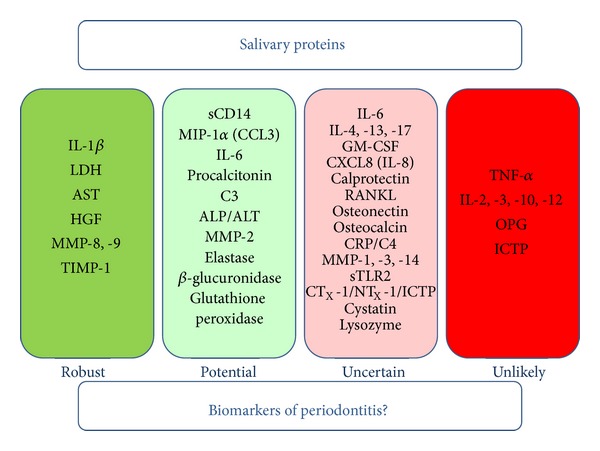Figure 2.

The possible role of salivary proteins as biomarkers of periodontitis. “Robust” biomarkers are defined as those salivary proteins which have been shown to discriminate between periodontitis and oral health in at least 3 cross-sectional studies (with comparatively little or no published evidence to the contrary) and for which there may be supporting evidence from longitudinal studies investigating the natural course of periodontitis and/or the effects of treatment on biomarker levels. “Potential” biomarkers are identified using identical criteria to “robust” biomarkers with the exception that there are 2 replicated cross-sectional studies showing disease discrimination in addition to possible supporting evidence from longitudinal studies but for which there may be limited contradictory studies. It is accepted that the entries in the “robust” and “potential” categories may be interchangeable depending on the existence of further studies which remain unpublished for commercial reasons. “Uncertain” biomarkers are proteins for which there are only single studies showing discrimination of periodontitis or for which there are several studies from which the evidence is contradictory. “Unlikely” biomarkers are those proteins for which there are 3 or more studies which fail to provide evidence for an association with periodontitis in the absence of any evidence to the contrary. For a more detailed description of the published research studies and the putative role of these proteins in periodontitis see the main body of the text.
